First Impressions: Challenge Flandrien TLR
Challenge’s handmade tubeless tires are as close as you can get to the ride feel and performance of a handmade tubular. A steadily increasing number of cyclocross racers are replacing their tubular wheels with tubeless, which makes changing tires across the racing season more practical and less of a chore. Previously only available as a tubular, the Flandrien Team Edition (TE) is now available in Challenge’s handmade tubeless lineup.
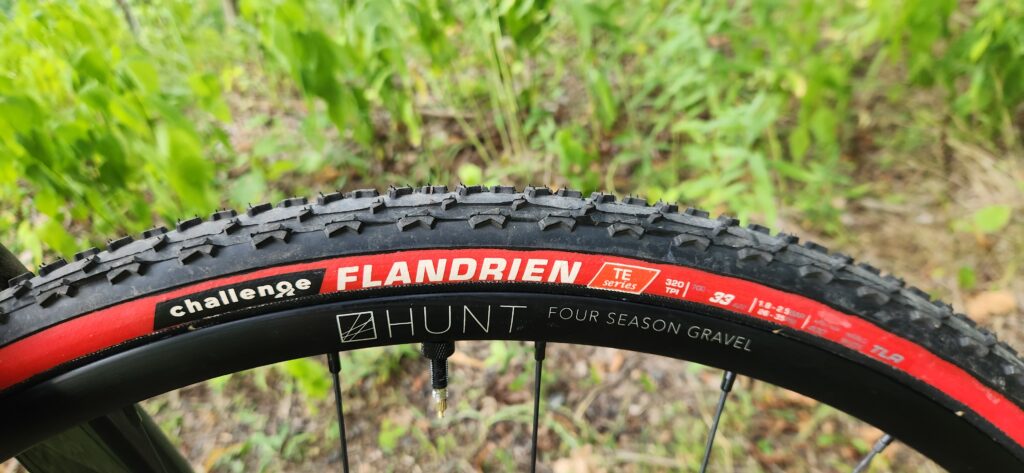
Tread Design
The Flandrien gained popularity because of its range of use beyond the all-purpose Grifo. The Flandrien’s side knobs are more aggressive compared to the Grifo, giving the tire more bite when the ground gets loose. And the center knobs are more spaced out than the Baby Limus and the Limus, allowing the Flandrien to shed mud and bite down into the the ground beneath a mud layer.

My test conditions for the Flandrien were hard packed dirt and dry grass. Not ideal for feeling out what the Flandrien was designed to take on. Our ground in WNY is cracked from the lack of rain and most of the grass is brown and brittle. However, in a few months, our cyclocross courses and parks where we practice will be soft and muddy. The Flandrien will perform the best in that fall transition as the need for traction in mud steadily increases.
Challenge’s tire map places the Flandrien in between the Grifo and the Baby Limus. Currently, the handmade tubless lineup includes: Chicane (PRO), Grifo (PRO & TE), Flandrien (TE), Baby Limus (PRO), and Limus (PRO & TE). The Grifo, Baby Limus, and Limus come in 33 mm or 38 mm in the PRO edition tubeless. All other models, including all Team Edition (TE) are only available in 33 mm.
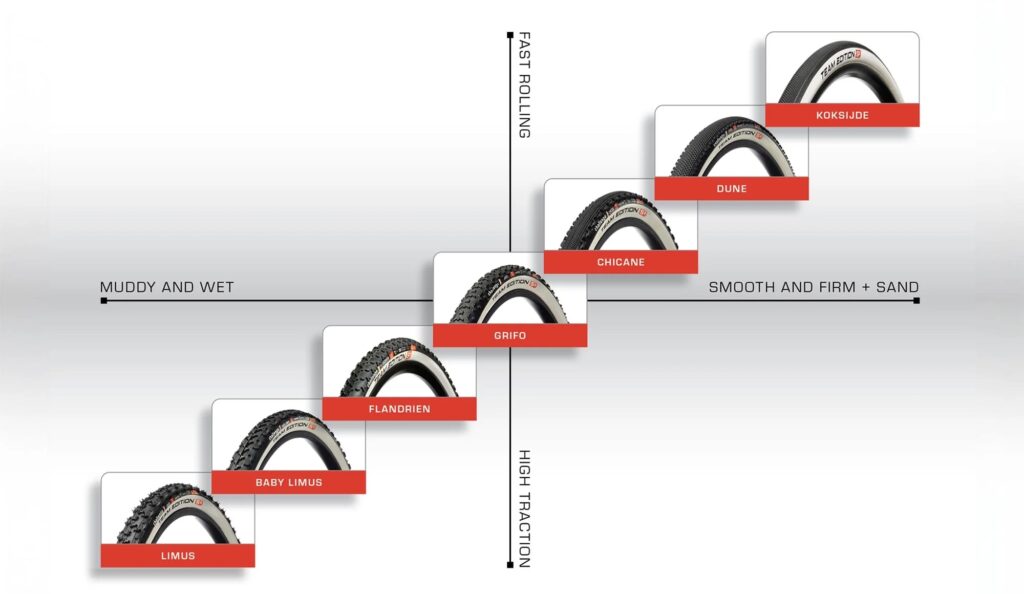
One important note between the 33 mm and 38 mm Pro tubeless tires is that only the casing is increased in size. The tread is the same width. Based on my long-term testing of the Grifo Pro tubeless in 38 mm, I found the side knobs hook at a slightly different lean angle compared to the 33 mm because the side knobs are essentially “higher” up on the larger casing.
Ride Feel vs Durability
I’ve been racing on cyclocross tubulars for over 20 years. Generally the more supple casing, the less durable the sidewalls are. A cotton casing tire feels great, but can rip easily and rot in the sidewalls if not taken care of properly. A vulcanized rubber casing is super durable, but can feel like you are riding on a rubber garden hose. Challenge strikes a nice balance with their red-colored Team Edition (TE) casings that are made of 320 TPI corespun cotton combined with natural rubber. Time will tell, but they appear to be more durable than the tan-colored Pro casings that are made of 300 TPI super polyester, which has a tendency to fray with prolonged use in muddy conditions.

The Flandrien TE tubeless tires feel very very close to a handmade Challenge tubular. I didn’t have the Flandrien TE tubulars on hand for a direct comparison, but compared to the other Challenge tubular cyclocross wheels in my quiver the Flandrien shares most of their ride characteristics.
Rim Width
Challenge designed their handmade tubeless range for 23 mm internal width rims. This is the maximum internal width for which you can expect the tires to meet the standard of 33 mm for UCI sanctioned races. Since most of us are not chasing UCI cyclocross points, we can ignore the UCI standard at our local cyclocross races.

I mounted my test set of Flandrien tubeless on a pair of HUNT 4 Season Gravel wheels with an internal width of 25 mm. The HUNT rims are hooked, but you can run the Flandriens on hookless. I found that the 25 mm internal width spread out the tire and reduced its height compared to what I’m used to seeing in a Challenge 33 mm handmade tubeless tire. Arguably, this could mean the tire is less likely to fold at low pressures when cornering, but also more likely to bottom out on roots and rocks. We are talking millimeters here, so it may not actually make as big a difference as I am anticipating.
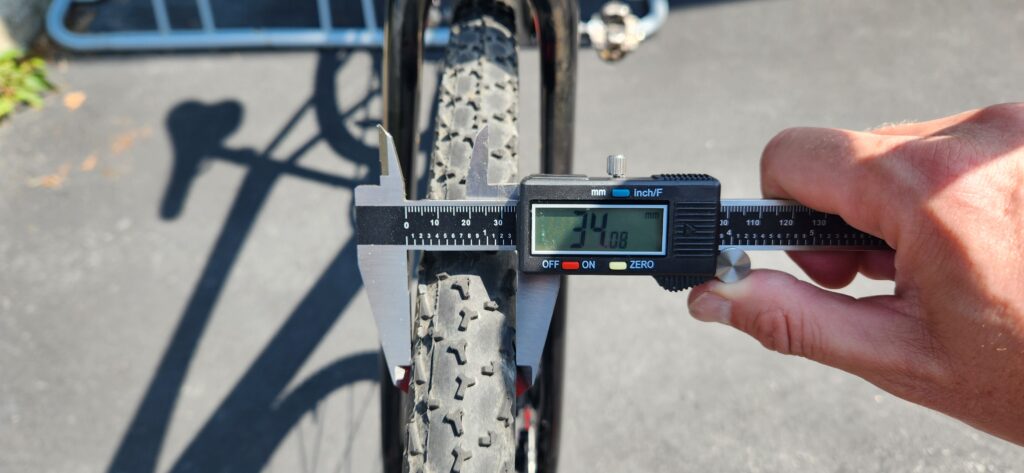
The Flandriens measured out to 34 mm on the HUNT hooked rims with 25 mm internal width.

Testing
For testing, I sessioned my local cyclocross course, which is currently hard pack dirt and dry grass. Once I had my lines dialed in for the conditions, I lowered my pressure by 1 psi each lap. The Viair Recon Mini is my new favorite pump for these kinds of tests. I’ll write a separate review on mini pumps soon, but for now this Recon Mini is the best I’ve used.
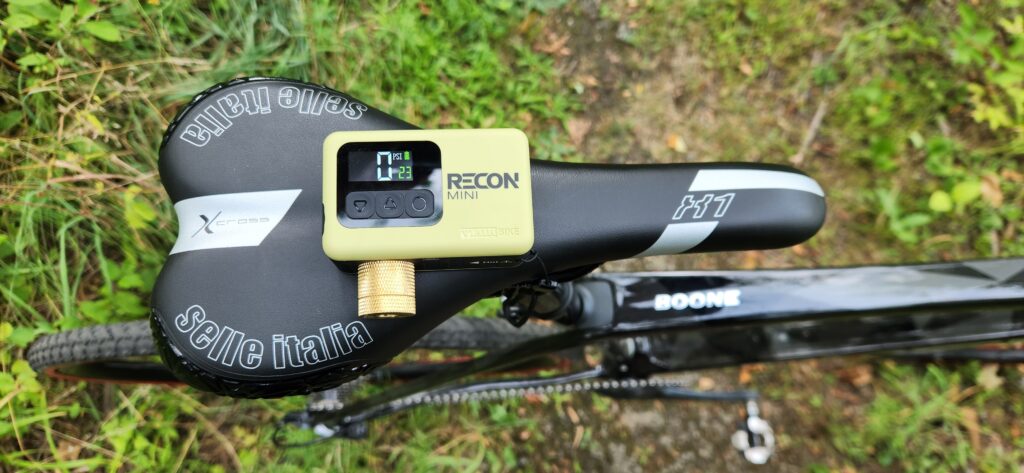
I found I could get within 1 or 2 psi of the same pressure I would run on a Challenge handmade tubular at this (high for me) body weight and course conditions. The Challenge handmade cyclocross tires are the best feeling tubeless tires that I have ridden and raced. Though I cannot say the cotton casing Team Editions ride better that the polyester casing PRO models, I do think that the TEs have more durable sidewalls. But time and muddy conditions will tell.
Verdict
Make no mistake. The Flandrien is a performance-oriented racing tire. The SMARTsoft natural rubber will wear more quickly than harder natural and vulcanized rubber. This Flandrien is not a training tire for racers on a budget. I would reserve them for cyclocross specific workouts and race day. The tread design has range to accommodate a good amount of the cyclocross season depending where you live and race. Aside from the extremes of dry dust bowls and deep mud bogs, the Flandrien will handle most of the terrain in between.
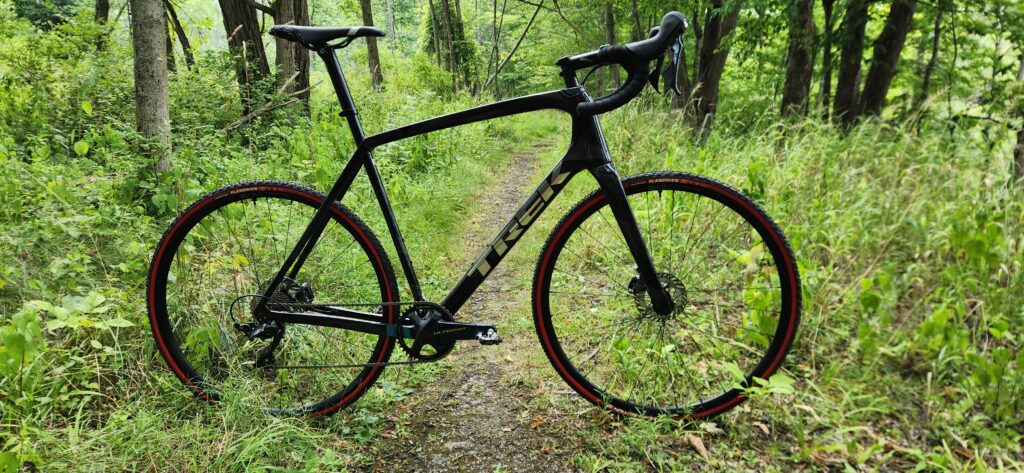
Do Not Wait
The Flandrien TE tubeless tires are priced at $99.99 each, which is not unreasonable for a natural rubber, handmade, tubeless, cyclocross tire with a cotton casing that rides like a tubular and will get you through most of the season’s conditions.
Trust me. Cyclocross is not dead. It may be retreating to its grassroots beginnings in parts of the country, but many racers will be stocking up. And my guess purely on past experience is the Flandrien TE tubeless will eventually run out of stock in the US this season.




Start the discussion at forum.slowtwitch.com